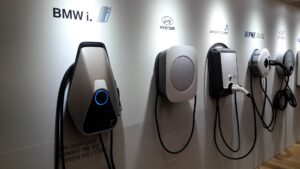Today, we are going to explore the fascinating world of building-integrated photovoltaics, commonly known as BIPV. Have you ever wondered how those sleek solar panels seamlessly blend into the architecture of buildings, generating clean and renewable energy? Well, we are here to demystify the science behind it. In this article, we will take a closer look at how BIPV systems work and how they are revolutionizing the way we think about harnessing the power of the sun. So, get ready to embark on a journey into the world of BIPV, where sustainability meets innovative design.
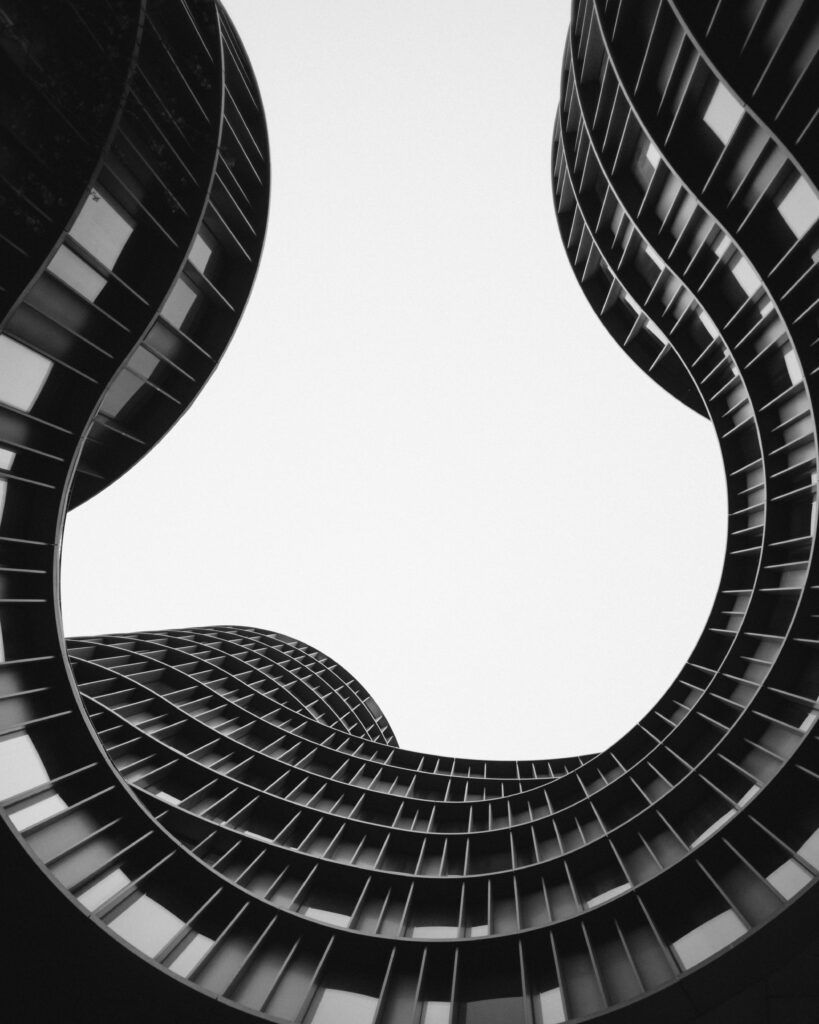
Introduction
What is building-integrated photovoltaics (BIPV)?
Building-integrated photovoltaics (BIPV) refers to the incorporation of solar energy technology into the design and architecture of buildings. Unlike traditional solar panels, which are typically added to an existing building as an afterthought, BIPV integrates solar cells directly into the building materials themselves. This innovative technology allows solar energy to be harnessed while maintaining the aesthetic integrity of the structure.
Importance of BIPV in sustainable architecture
As the world strives to reduce its dependency on fossil fuels and transition to renewable energy sources, sustainable architecture plays a vital role in achieving this goal. BIPV offers a unique opportunity to integrate solar energy generation directly into the built environment, making it an essential component of sustainable architectural design. By seamlessly incorporating solar cells into buildings, BIPV not only reduces greenhouse gas emissions but also enhances the overall energy efficiency and self-sustainability of structures.
Solar Energy Conversion
Photovoltaic Effect
At the core of BIPV technology lies the photovoltaic effect, which is the process through which solar cells convert sunlight into electricity. When sunlight strikes the solar cell’s semiconductor material, it dislodges electrons from their atoms, creating an electric current. This direct conversion of sunlight into electricity is a key feature that sets BIPV apart from other solar energy generation systems.
Types of BIPV Technologies
There are several types of BIPV technologies available, each with its own unique capabilities and applications. Some common examples include solar shingles, solar windows, solar facades, and solar roofing tiles. These technologies utilize different materials and designs to maximize solar energy conversion while blending harmoniously with the building’s overall aesthetics.
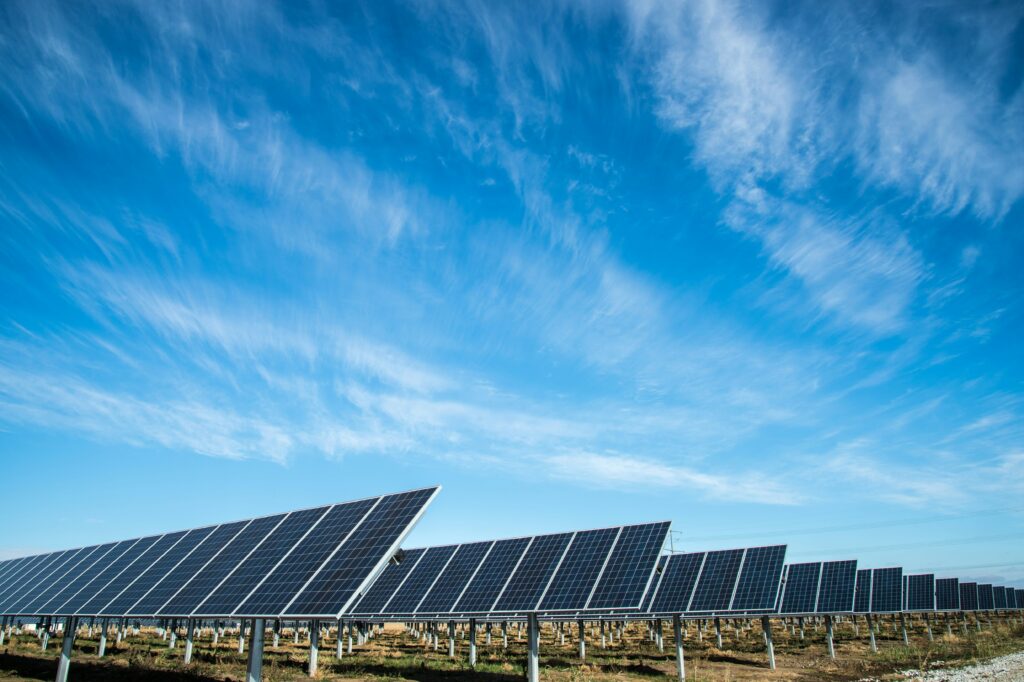
Benefits of BIPV
Energy Generation
One of the primary benefits of BIPV is its ability to generate clean and renewable energy. By harnessing the power of the sun, BIPV systems reduce the dependence on traditional energy sources and decrease the carbon footprint of buildings. The energy generated can be used to power various electrical systems within the building or be fed back into the grid, contributing to a more sustainable and resilient energy infrastructure.
Architectural Integration
Unlike traditional solar panels, which are often seen as a visual intrusion, BIPV seamlessly integrates solar energy technology into the building’s design. It allows architects and designers to incorporate solar cells into various building elements, such as roofs, facades, and windows, without compromising the aesthetic appeal of the structure. This architectural integration enables buildings to blend into their surroundings while simultaneously acting as renewable energy generators.
Cost-Effectiveness
While BIPV systems may have a higher upfront cost compared to conventional building materials, they offer long-term cost savings. The energy generated by BIPV systems can significantly reduce a building’s reliance on grid power, resulting in lower energy bills over time. Additionally, BIPV systems often have a longer lifespan than traditional building materials, reducing maintenance and replacement costs in the long run.
BIPV Components
Solar Cells
Solar cells, also known as photovoltaic cells, are the heart of BIPV systems. These electronic devices capture sunlight and convert it into electricity using the photovoltaic effect. Solar cells are typically made of semiconductors, such as silicon, which have unique properties that enable the efficient conversion of sunlight into electrical energy. These cells are integrated into various building materials, allowing the structure to generate its own electricity.
Transparent or Translucent Covering
To allow sunlight to reach the solar cells while maintaining the integrity of the building envelope, BIPV systems often incorporate transparent or translucent coverings. These coverings can be made of materials such as glass or specialized polymers, which allow visible light to pass through while selectively absorbing or reflecting ultraviolet and infrared light. This ensures efficient energy conversion while providing adequate protection for the solar cells.
Wiring and Inverters
In order to harness and utilize the electricity generated by the solar cells, BIPV systems require wiring and inverters. The wiring connects the individual solar cells together, forming an interconnected network that enables the efficient flow of electricity. Inverters, on the other hand, convert the direct current (DC) generated by the solar cells into alternating current (AC), which is suitable for use in most electrical systems. These components ensure that the electricity generated by the BIPV system can be seamlessly integrated with the building’s electrical infrastructure.
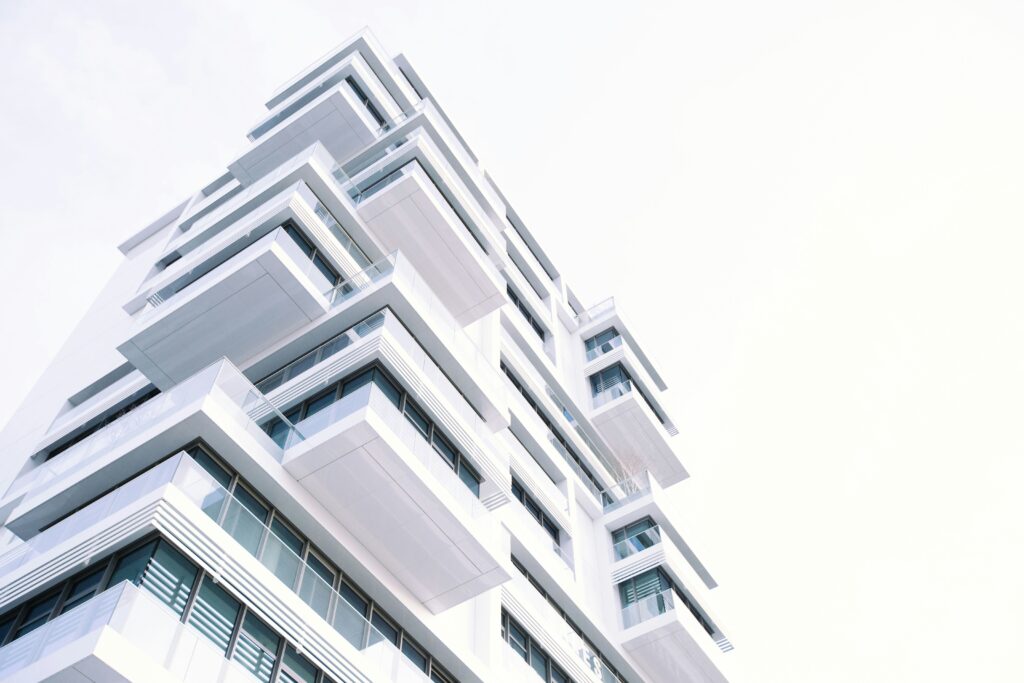
BIPV Installations
Roof Installation
Roof installations are one of the most common applications of BIPV technology. Solar roofing tiles or shingles are designed to replace traditional roofing materials while generating electricity. These tiles are integrated with solar cells, allowing them to collect sunlight and convert it into electricity. Roof installations offer an efficient use of space, as the building’s existing roof area is utilized for solar energy generation without compromising the overall aesthetic appeal of the structure.
Facade Integration
BIPV systems also enable the integration of solar cells into building facades. Solar facades can take the form of cladding or curtain wall systems, where the solar cells are incorporated into the outer layer of the building envelope. This integration allows the entire surface area of the building to contribute to solar energy generation, maximizing the potential energy output. Solar facades not only provide sustainable power generation but also enhance the appearance of the building, creating a striking visual statement.
Window Glazing
Window glazing is another innovative application of BIPV technology. Transparent solar panels can be integrated into windows, allowing them to generate electricity while maintaining their transparency. These solar windows capture sunlight through the glass surface and convert it into electricity, providing a dual function of energy generation and natural light transmission. Window glazing installations are particularly beneficial in areas where space limitations may restrict the use of other BIPV systems.
BIPV Applications
Residential Buildings
BIPV technology holds immense potential for residential buildings. By integrating solar cells into roofs, facades, and windows, homeowners can generate their own clean energy while reducing their reliance on the grid. BIPV systems can power various household appliances, such as lighting, heating, and cooling systems, making residential buildings more energy-efficient and environmentally friendly. With the increasing focus on sustainable living, BIPV offers homeowners an attractive option to embrace renewables and reduce their carbon footprint.
Commercial and Industrial Buildings
Commercial and industrial buildings are significant consumers of energy. BIPV presents an excellent opportunity to reduce energy costs and environmental impact in these sectors. By integrating solar cells into roofs, facades, and windows of commercial and industrial buildings, companies can generate clean energy to power their operations. BIPV can also contribute to achieving sustainability certifications, such as LEED (Leadership in Energy and Environmental Design), enhancing the overall marketability and value of these structures.
Public Structures
Public structures, such as schools, hospitals, and government buildings, can greatly benefit from BIPV installations. These buildings not only consume a significant amount of energy but also serve as symbols of public commitment to sustainability. By incorporating BIPV systems, public structures can generate clean energy while showcasing environmental leadership. Additionally, BIPV installations can be educational tools, raising awareness about renewable energy and inspiring the community to embrace sustainable practices.
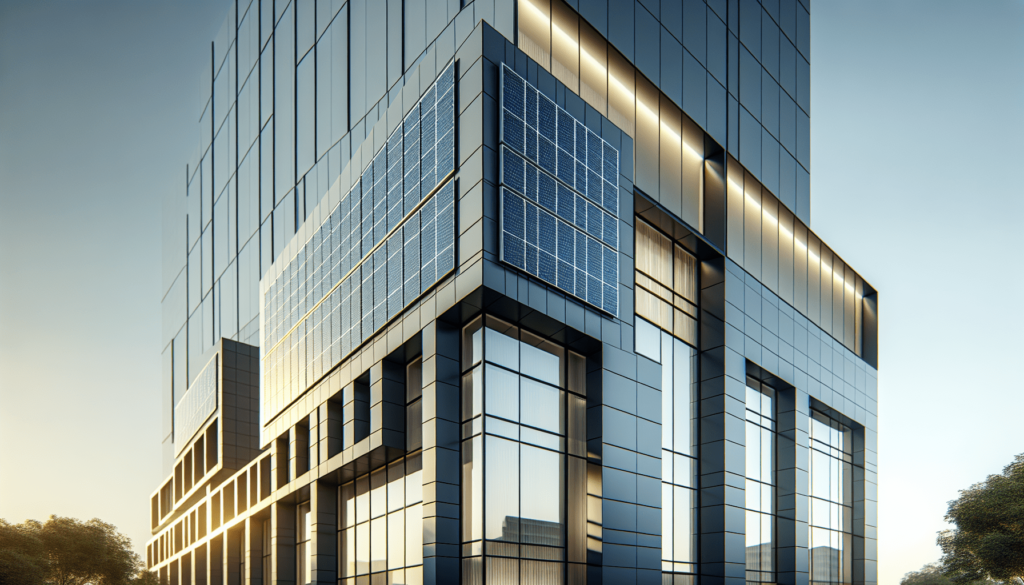
Challenges and Limitations
Efficiency and Performance
While BIPV technology has made significant advancements in recent years, efficiency and performance remain key challenges. The conversion efficiency of solar cells in BIPV systems is typically lower than that of traditional solar panels due to limitations imposed by the building materials and integration methods. Manufacturers are continuously striving to improve the efficiency of BIPV systems to maximize energy output and increase cost-effectiveness.
Initial Costs
BIPV systems often have higher upfront costs compared to traditional building materials, primarily due to the integration of solar cells into the building elements. However, it is important to consider the long-term benefits and savings associated with BIPV, such as reduced energy bills, potential government incentives, and increased property value. As technology advances and economies of scale are realized, the initial costs of BIPV systems are expected to decrease, making them a more financially viable option.
Maintenance and Durability
Maintaining and ensuring the durability of BIPV systems can be challenging. The integration of solar cells into building materials requires careful handling and consideration of long-term performance. Regular cleaning and inspection of the solar cells, transparent coverings, and wiring are necessary to optimize energy generation and prevent any malfunctions. Additionally, the durability of these components must be carefully evaluated to ensure they can withstand various weather conditions and potential physical impacts.
Future Developments
Technological Advancements
The future of BIPV holds exciting possibilities for technological advancements. Researchers and manufacturers are continuously working on improving solar cell efficiency, enhancing durability, and streamlining the integration process. Innovations such as flexible solar cells, thin-film technologies, and advanced manufacturing techniques hold great promise in unlocking the full potential of BIPV. These advancements may lead to more cost-effective, efficient, and aesthetically pleasing BIPV systems, driving their widespread adoption in the future.
Integration with Energy Storage
Integrating BIPV systems with energy storage solutions is another area of significant development. Energy storage technologies, such as batteries, allow excess solar energy generated during the day to be stored for later use. This enables buildings to become more self-sufficient and resilient, reducing reliance on the grid and providing a continuous power supply during periods of low sunlight or outages. The integration of BIPV with energy storage can further enhance the sustainability and reliability of buildings, making them more self-sustaining and less vulnerable to fluctuations in energy supply.
Government Initiatives
Government support and initiatives play a crucial role in the future of BIPV. Many governments worldwide have recognized the importance of renewable energy and incentivize the adoption of BIPV systems through various policies and programs. These may include financial incentives, tax credits, regulatory frameworks, or the inclusion of BIPV requirements in building codes. Government support can significantly accelerate the adoption of BIPV, making it a standard feature in sustainable architecture and driving the global transition to renewable energy.
Case Studies
Solar City Tower, Rio de Janeiro
The Solar City Tower in Rio de Janeiro, Brazil, is an iconic example of BIPV integration. The tower features a heliostat system with mirrored panels that track the sun’s movement, reflecting sunlight onto the building’s solar cells. The solar cells, integrated into the building facade, generate clean energy, contributing to the tower’s power needs. The excess energy generated is used to power Rio de Janeiro’s electric buses, showcasing the potential of BIPV to not only power the building but also support the local community’s energy demands.
BedZED, London
BedZED (Beddington Zero Energy Development) in London, United Kingdom, is hailed as one of the world’s first large-scale carbon-neutral eco-communities. The development incorporates a range of sustainable features, including BIPV systems. The rooftops of the buildings are fitted with solar panels, generating electricity to power the community’s lighting and heating needs. These BIPV installations not only contribute to reducing carbon emissions but also serve as a visible reminder of the community’s commitment to sustainable living.
MASDAR City, Abu Dhabi
MASDAR City in Abu Dhabi, United Arab Emirates, is a planned sustainable city that aims to be entirely carbon neutral. BIPV plays a significant role in achieving this goal, as solar panels are integrated into the buildings’ facades and rooftops. The BIPV installations generate clean energy, powering the city’s infrastructure and reducing its dependence on traditional energy sources. The incorporation of BIPV in MASDAR City showcases the city’s commitment to sustainability and serves as a model for future sustainable urban developments worldwide.
Conclusion
The promising future of building-integrated photovoltaics (BIPV) lies in its ability to seamlessly integrate solar energy generation into architectural design. BIPV not only offers clean and renewable energy generation but also enhances the aesthetic appeal and energy efficiency of buildings. With the continuous technological advancements, growing public awareness, and government support, BIPV is poised to play a pivotal role in the transition to a sustainable and renewable energy future. By embracing BIPV, we can build a greener world that harnesses the power of the sun and reduces our reliance on finite fossil fuel resources. Together, we can create a sustainable future for generations to come.




